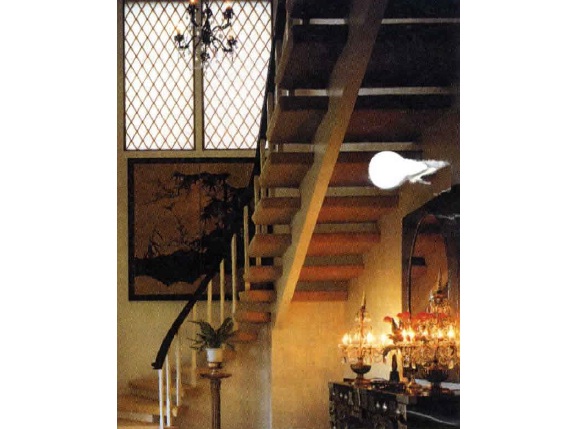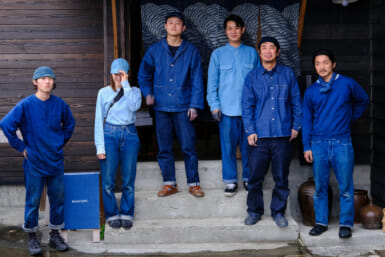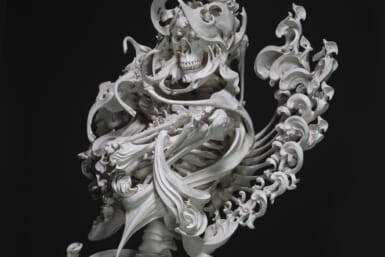by James Mulligan
After touching down in Tokyo, newcomers are often welcomed by work colleagues and new friends with an invite to their homes. One of the first things the new arrival notices is how Japanese culture is incorporated into the decor of the international home.
Creating your own east-meets-west look is a never-ending quest. Each piece you acquire expands your knowledge of Japan—its aesthetics, history and charm—and, suddenly, you are out searching for more.
The places to find objects are as plentiful as the types of collectibles: antique shops, galleries, flea markets and specialty stores abound.
Weekender hears from three experts on antiques, prints and screens: John Adair of Kurofune, Norman Tolman of Tolman Collection and George Godoy who deals in antique screens with his wife Sandra.
Prints
While retaining one’s own cultural roots, it is possible to incorporate Japanese contemporary prints into decorating your house, without having to forfeit personal style. The variety of available art in which to do this is seemingly endless.
Prints are pulled in editions of anywhere from 20 to 100 copies, and the artist is able to divide the cost over the number of copies, making even the works of quite famous artists affordable.
To learn more about Japanese prints, the annual College Women’s Association of Japan Print Show at the Tokyo American Club shows the vast array of techniques, styles, sizes and even shapes used in Japanese prints. Now in its 48th year, CWAJ and the exhibition turn everyone on to the wonderful world of Japanese contemporary prints.
The Tolman Collection has a bilingual staff trained to provide information not only about prints themselves, but also about the people who make them. One treat in going to the gallery is the chance to meet artists who are regular visitors there. Owner Norman Tolman says, “At our openings for exhibits, the gallery always has the artist present, so that art lovers can ask first-hand questions to which only the artists could know the answers.
The term “Japanese prints” leads one to think the artists are exclusively Japanese, when in fact there are many foreign artists. One of the leading “foreign” Japanese printmakers is Clifton Karhu. An American who has lived in Japan since the 1950s, Karhu has produced about 1,000 prints, characterized by strong lines and colors.
Karhu is even more famous among Japanese collectors than among his many Western fans. This is also the case for the other 12 or so Westerners creating Japanese prints. For many, they bring a fresh perspective to Japanese culture. If you are thinking about starting to collect prints, maybe you can start with the Westerners. You might even bump into them at Tolman Gallery.
Antique screens
Historically, folding screens (byobu) were functional pieces of furniture in traditional Japanese houses. They were intended to stop wind or drafts. The Chinese characters for byobu are “protection” and “wind.”
Screens originated in China, but their use as surfaces for paintings originated in Japan. Gold and silver leaf was used on some screens as they reflected the candlelight at night and brightened up large rooms, which the wealthy classes used in their mansions and castles.
There were several “schools of painting,” which developed their own painting styles, and many of these pieces are still available today.
Most screens are either paper or silk, but more paper screens have survived over the centuries than silk screens. Screens were generally produced in pairs and are usually either two or six panels per screen.
The artist would consider the two screens as one painting surface, and when opened they make one scene, sometimes continuous, and other times as a contrast to each other. Each single screen is considered a complete painting, however, and can be viewed on its own. In addition, each two panels of a six-panel screen are considered a complete painting, so the six-panel screen can be used as a four-panel or a two-panel screen and still produce a picture.
Screens should be considered as a painting on a folding frame, and one should use the usual care in selecting a screen to decorate their room or house.
George Godoy, a leading expert on Japanese antique screens, says scenes and colors should appeal primarily to the buyer, then the quality of the painting should be considered. He adds, “If all the factors mesh together, you will have a beautiful painting to admire.”
Godoy also offers a few words of advice: “One of the most important aspects in purchasing a screen is to make sure the dealer selling the screen really knows and understands—and can explain —the history, style, age, value and quality to you,” he says.
“Dealers who have specialized in paintings are quite rare, but a knowledgeable expert can guide you to a screen, which may be an investment, and will certainly be something that gives you continuous viewing pleasure.”
Antique buying
When it comes to choosing Japanese antiques, Kurofune Antiques owner John Adair sees in many of his clients a more expressive and experimental approach to buying. “There seems to be more of an attempt to find a happy medium between the Western tendency to fill a space and the Japanese tendency to create one,” says Adair.
Choosing something to collect, however, has become so much harder given the dearth of really great pieces at the top end of the market. “Great impressionist paintings and old masters fall under the sights of the Gettys (museums) and the Gates (Bill),” says Adair.
There are still some great pieces in many categories that can be acquired while in Japan. Just move quickly, while they are still available. “Fewer and fewer of them remain,” warns Adair.










